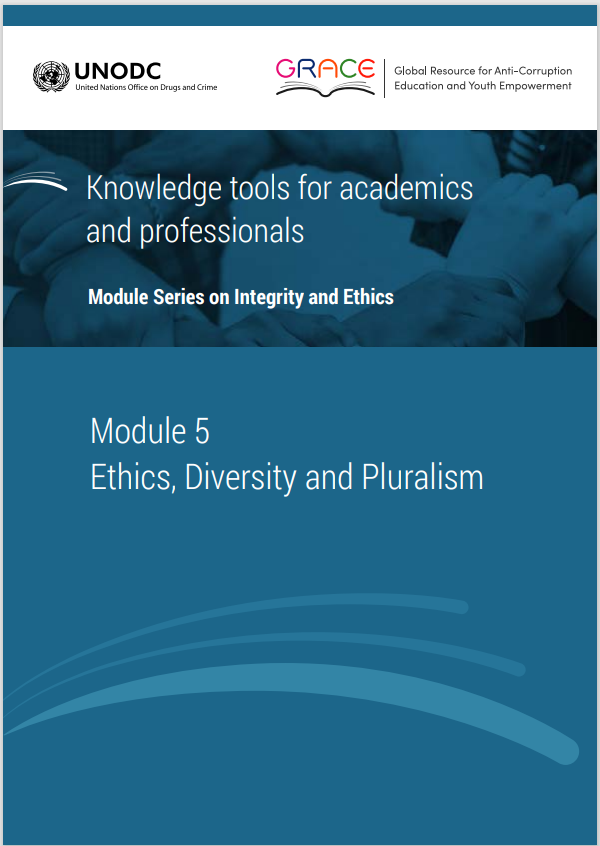This module is a resource for lecturers
Possible class structure
This section contains recommendations for a teaching sequence and timing intended to achieve learning outcomes through a three-hour class. The lecturer may wish to disregard or shorten some of the segments below in order to give more time to other elements, including introduction, icebreakers, conclusion or short breaks. The structure could also be adapted for shorter or longer classes, given that the class durations vary across countries.
Ethics, Diversity and Pluralism (60 minutes)
- Introduce students to the key issues of the Module; lecturers can use the PowerPoint presentation provided in the Additional teaching tools section (15 mins).
- Discuss with students the following questions (30 min):
- Are societies improved through diversity or do they suffer because of the conflicts that arise?
- What is the difference between tolerance and pluralism?
- What experiences of discrimination have students experienced in their own lives?
- What experiences of tolerance have students experienced in their own lives?
- What experiences of pluralism have students experienced in their own lives?
- Exercise 1 - Use the example of Malala to discuss tensions and problems of diversity, tolerance and pluralism (15 min).
Diversity, heritage and identity (20 min)
- Show video demonstrating our common ancestry and mixed racial/geographical backgrounds based upon DNA testing (8 min).
- Exercise 2 - Students think about/draft answers to the exercise questions (12 min) .
Ethical role models and their relevance (60 min)
- Show video of the Cyrus Cylinder and discuss the leadership of Cyrus (20 min).
- The lecturer conducts Exercise 3, facilitating a discussion and/or role play of Nelson Mandela's first major ethical/racial (in)justice case based upon the reading from The Long Walk To Freedom (official). Alternatively, the lecturer conducts Exercise 4, showing and discussing the video montage of four ethical role models - Cyrus, Gandhi, Mother Theresa, and Bayard Rustin (30 min).
- Lecturer stresses the many types of diversity including racial, linguistic, and religious, and emphasises the power of diversity in community building and social advancement (10 min).
Model United Nations or Intersectional Constitution exercise (30 min)
- The lecturer conducts Exercise 5 (Intersectional Constitution). To manage this in 30 minutes, the lecturer can ask the students to decide before class on the roles they will assume.
- Alternatively, the lecturer conducts Exercise 6 ( Model United Nations). To manage this in 30 minutes, the lecturer can ask the students to decide before class on the countries and issues they will defend, or can assign them their roles.
Summary (10 min)
- Bring together the themes raised in the different exercises to understand and assess issues of tolerance, diversity and pluralism.
 Next page
Next page
 Back to top
Back to top
